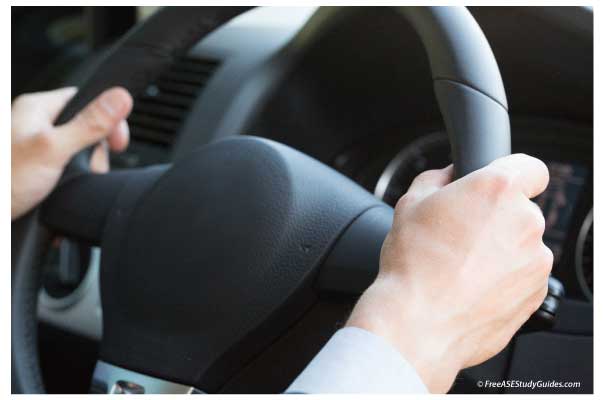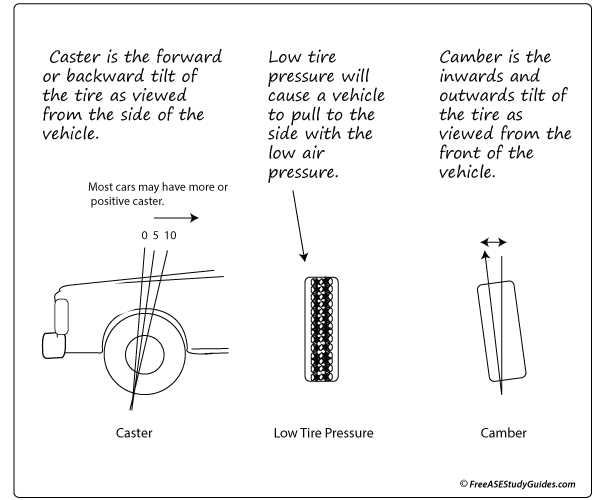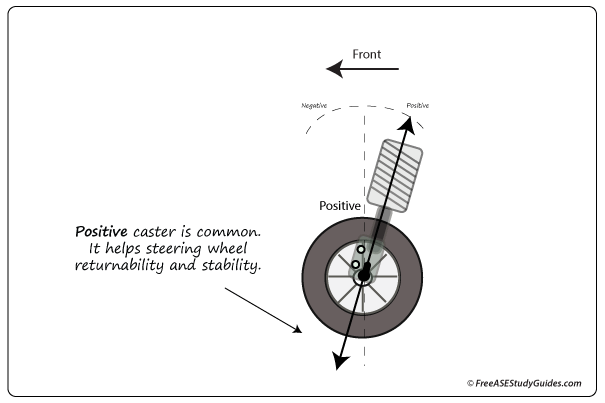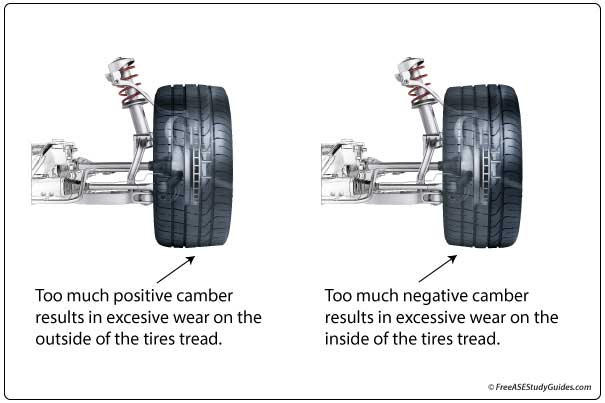Steering: Steady Pull

A steady pull is present at all times and differs from bump steer (caused by a bump in the road) or memory steer (caused by a binding steering component) after a turn. It's a constant pull to one side and can be caused by various situations, depending on the vehicle and the type of steering/suspension.

Most causes are general and apply to all vehicles. These include the steering angles, caster, and camber. Mismatched tires and low air pressure in one of the front tires cause a steady steering pull. The vehicle will pull to the side with low air pressure.
Caster

Caster: The caster angle is measured in degrees: formed by a true vertical line and a line through the center of the vehicle's strut. It's the forward and backward tilt of the steering axis, as seen from the side of the vehicle. If the caster is not equal on both sides of the vehicle, it will pull to the side with the least amount or most negative caster. Manufacturers use this adjustment to compensate for crowned roads. An out-of-specification caster angle is typically due to a broken or bent part, possibly a bent strut or control arm caused by a collision. Most vehicles have positive caster. Positive caster helps with stability and steering wheel return.
Camber

Camber: The camber angle is the tilt of the tire inwards or outwards from the tire's true vertical centerline as viewed from the front of the vehicle. The vehicle will pull to the side with the most positive camber. The camber angle is a tire-wearing angle. In the illustration, you can see how this angle can wear the tire on one side or the other, depending on whether the angle is negative or positive.
Tire Pressure

Tire Pressure: A vehicle's tire pressure can affect its ability to steer straight, fuel mileage, and wear. If tire air pressures are uneven across the front tires, the vehicle will pull to the side with the least pressure. The outside edges wear when tire pressure is low. Tires balloon and wear in the center when overinflated.